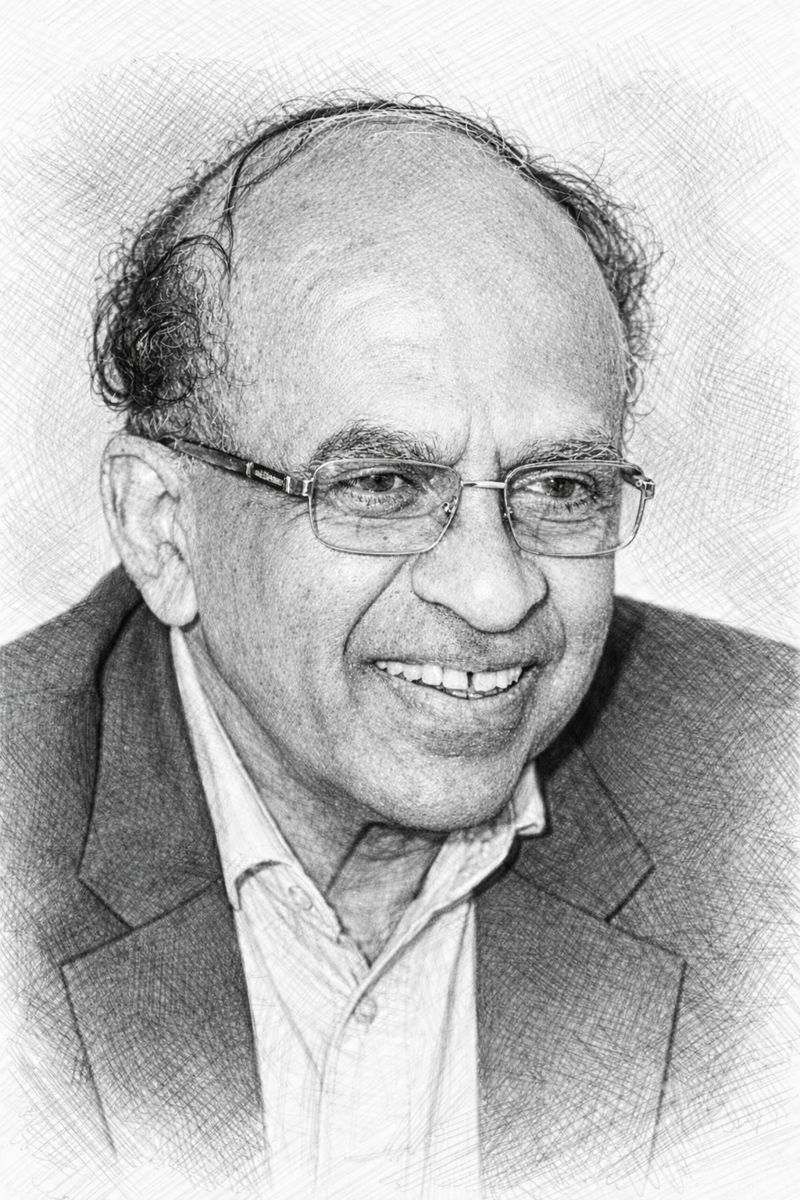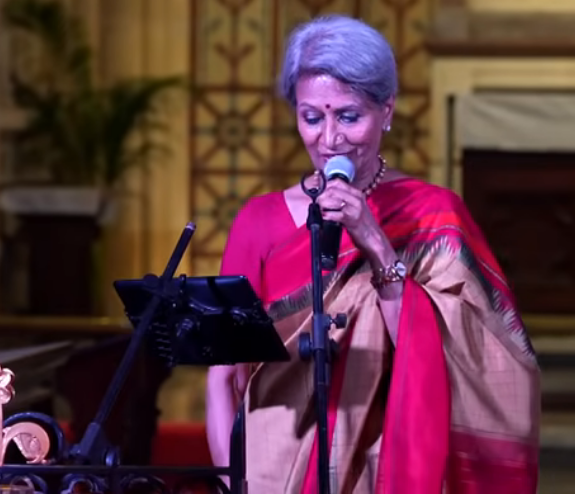Ceylonese planters, too, died at Gallipoli – By GEORGE BRAINE
 My sister and I were at the Beach Cemetery in Gallipoli, where 285 British Commonwealth troops are buried. Our Turkish guide was listing the countries from where the fallen were from, and Ceylon was not mentioned. I was wondering around, peering closely at the gravestones, when I spotted three graves of riflemen from the Ceylon Planters Rifle Corps. I shouted out that Ceylonese were also buried there, and the guide came running to check. From now on, he assured me, Ceylon would be among the countries he listed.
My sister and I were at the Beach Cemetery in Gallipoli, where 285 British Commonwealth troops are buried. Our Turkish guide was listing the countries from where the fallen were from, and Ceylon was not mentioned. I was wondering around, peering closely at the gravestones, when I spotted three graves of riflemen from the Ceylon Planters Rifle Corps. I shouted out that Ceylonese were also buried there, and the guide came running to check. From now on, he assured me, Ceylon would be among the countries he listed.
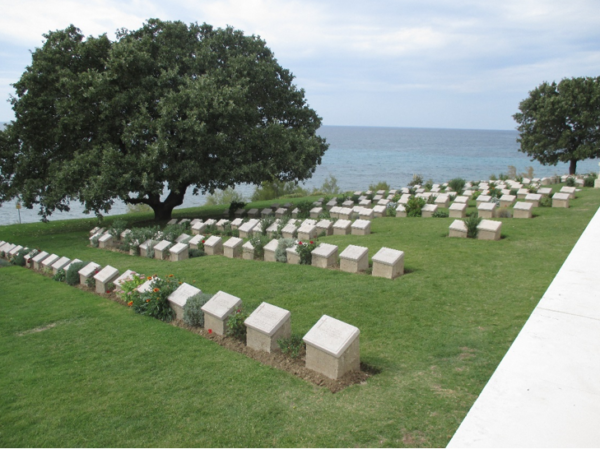
The three graves, of A. Forrest, G. Middlemiss, and H.A. Carlisle, are located next to each other. The first landing by the Corps at Anzac Cove was on April 25, 1915, so these three had succumbed within about ten days of the landing.
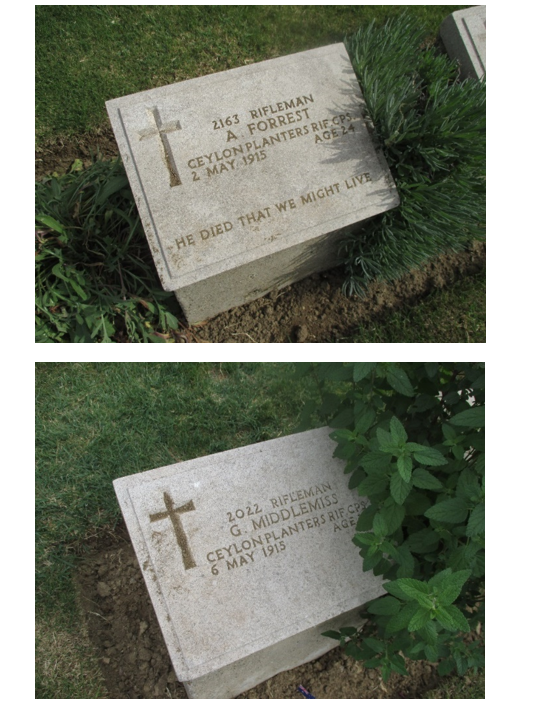
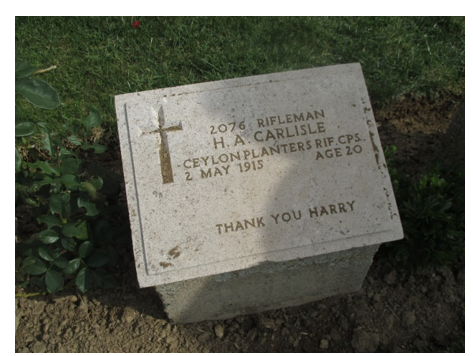
Fascinated by its location between Europe and Asia, I was fulfilling a wish to visit Istanbul, taking my sister along. We enjoyed the sights, savored the fabulous cuisine, took a day cruise, witnessed the Whirling Dervishes, and returned again and again to the Grand Bazaar. We also met with old friends. The only excursion away from Istanbul was to Gallipoli.
I am not an Australian or a New Zealander, nor do I have an ancestor who fought at Gallipoli, but the annual ANZAC commemoration ceremonies, and the near reverential tones in which Gallipoli is referred to, made me curious. So, we took the 10-hour strenuous roundtrip by coach to Gallipoli from Istanbul.
During World War I, Turkey was an ally of the Germans, and the purpose of the Gallipoli campaign was to force Turkey out of the war. Winston Churchill, as the First Lord of Admiralty, spearheaded the effort, which eventually cost 120,000 British casualties (killed or wounded), half of them from illness due to the extremely unsanitary conditions. An untold number died in the ships that were sunk. The debacle led to Churchill’s resignation.
The Ceylon Planters Rifle Corps (CPRC) was formed in 1900, and consisted mainly of European tea and rubber planters, all volunteers. During World War I, eight officers and 221 other ranks embarked for Egypt, and were trained there. Eighty of these troops were sent to Gallipoli, the first group landing there on April 25, 1915. The troops were mainly used as the ANZAC commander’s bodyguard. In addition to the three buried at the Beach Cemetery, three more, who died on board hospital ships on the way home, are said to be buried in Colombo.
One CPRC soldier who survived was Herbert Brett, who planted at Pannala, in the NWP, on a coconut estate named Yakwila. He was a close friend of my English grandfather, who was also planted nearby. Brett, like many others in the Corps, joined the British army, was commissioned, eventually rising to the rank of major. He landed at Gallipoli on May 29. After the battalion he commanded was decimated (out of 500 soldiers, only 18 men and one officer were left), Brett surrendered to the Turks on August 6, and was mistreated as a POW. He did not return to Ceylon.
The 31 Allied cemeteries at Gallipoli are managed by the Commonwealth War Graves Commission, and are situated in beautifully landscaped, picturesque locations. All are meticulously maintained, and some have intriguing names like Pink Farm, Twelve Tree Copse, Canterbury, Johnston’s Jolly, and Lone Pine. Of the 22,000 Allied troops buried at Gallipoli, only about 9000 have been identified.
In addition to the huge casualties suffered by the UK, the French suffered 27,000 casualties, the Australians, 28,000 (8700 dead), and the New Zealanders 7400 (2779 dead). The total Allied deaths were around 44,000.
Due to the heavy casualties they suffered, Australia and New Zealand regard the Gallipoli campaign as a baptism of fire, leading to their emergence as independent countries.
According to one estimate, despite their victory, 325,000 Ottoman (Turkish and Arab) troops died during the eleven-month campaign. Of this number, 85,000 were combat related and 240,000 were due to sickness. A staggering 1,965,000 were permanently wounded, sick, or missing.
Mustafa Kemal Atatürk (1881-1938) rose to prominence as a commander at Gallipoli, became the founding president of Turkey in 1923. Despite the massive losses his country had suffered at Gallipoli, Atatürk made a magnanimous speech in 1934, which contained the following words:
Those heroes that shed their blood and lost their lives … you are now lying in the soil of a friendly country. Therefore rest in peace. There is no difference between the Johnnies and the Mehmets to us where they lie side by side here in this country of ours … You, the mothers, who sent their sons from far away countries wipe away your tears; your sons are now lying in our bosom and are in peace. After having lost their lives on this land they have become our sons as well.
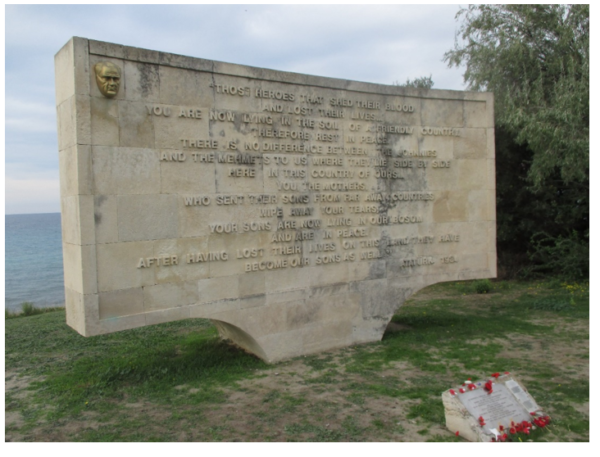
On seeing the memorial with his words, my esteem for Atatürk rose, prompting me to read more about him. The following quote on his tremendous achievements is from a Turkish writer.
“In 1924, a year after founding the Turkish Republic on the ruins of the Ottoman Empire, Mustafa Kemal Atatürk, the country’s new leader, abolished the Ottoman Caliphate … Having introduced a secular constitution and a Western-style civil and criminal legal code, Atatürk shut down the dervish lodges and religious schools, abolished polygamy, and introduced civil marriage and a national beauty contest. He granted women the right to vote, to hold property, to become supreme-court justices, and to run for office. The head scarf was discouraged. A notorious 1925 “Hat Law” outlawed the fez and turban; the only acceptable male headgear was a Western-style hat with a brim. The Ottoman Arabic script was replaced by a Latin alphabet, and the language itself was “cleansed” of Arabic and Persian elements.”
Batuman, “Elif. The head scarf, Modern Turkey, and me.” The New Yorker, Jan. 31,2016.

















